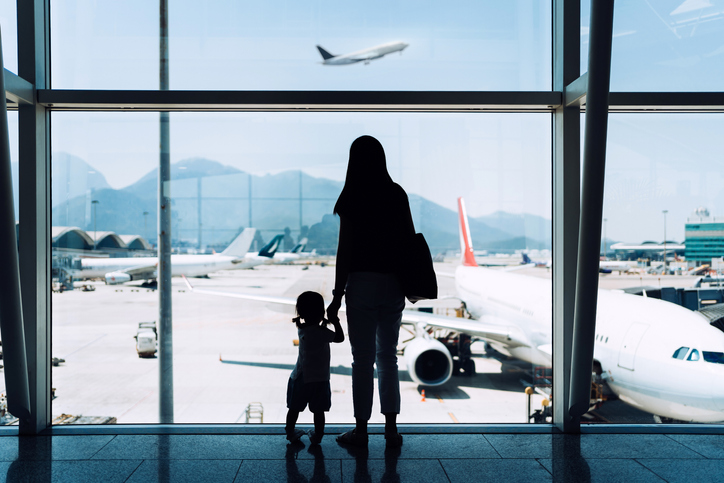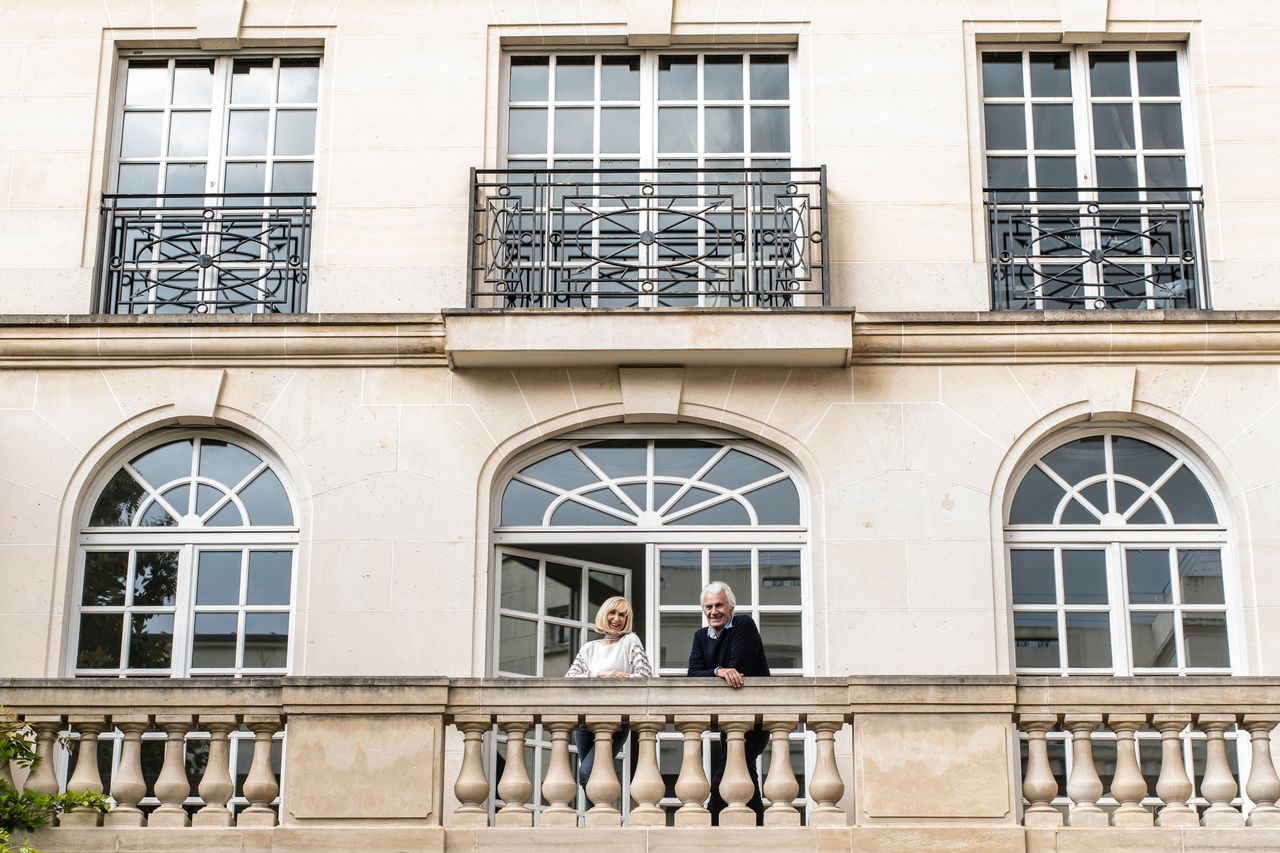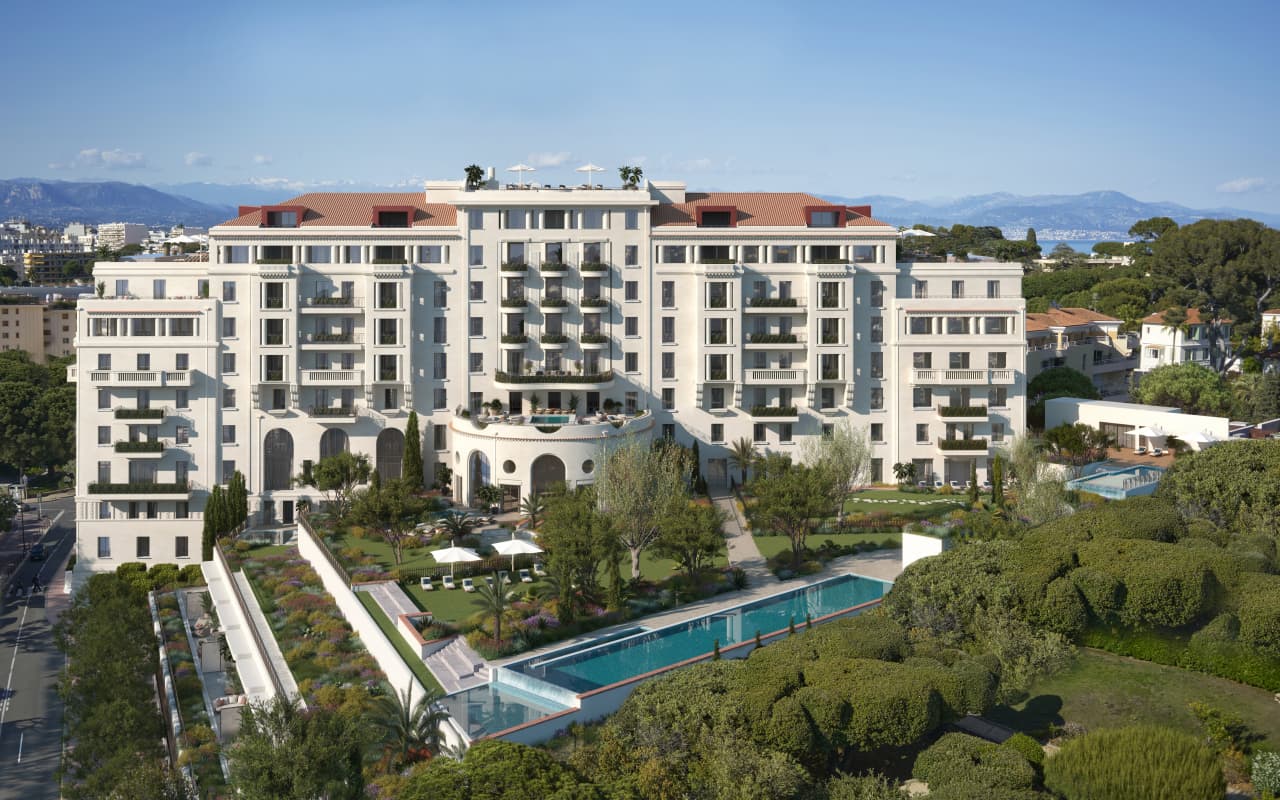Is Immigration The Key To Growth?
An influx of people could calm future volatility.
OPINION
Australia has been blessed over its economic history, weaving and dodging through major financial crises relatively unscathed. It entered the COVID-19 pandemic, which has caused the most severe global economic shock since the Great Depression, from a position of extreme strength — the budget was in balance for the first time in 11 years, workforce participation at a record high and welfare dependency at its lowest in a generation.
Australia was bathing in the glory of the most prolonged uninterrupted GDP growth worldwide in 30 years. Australians also have emerged post-COVID as the wealthiest people per capita globally. Australia’s economy is the most robust according to OECD as per below.
Has our luck run out?
Learning From The Past
In every significant economic challenge presented to Australia over the past 30 years, there has been unexpected good fortune that allowed Australia to adapt and find new opportunities.
That was not always the case, as in the 90’s recession we experienced a period of stagflation, reflected by high inflation of 5.5%, negative GDP growth, official interest rates of 12%, and unemployment of 12%, with the manufacturing industry being decimated.
At that time, Australia ranked extremely low within the OECD nations regarding income per capita. At the time, Singaporean Prime Minister Lee Kuan Yew berated Australia, warning Australians were on track to become “the poor white trash of Asia.”
Despite the dire circumstances, Australia has used this era to introduce successful economic reforms that have served well for many decades.
Our economy adapted and prospered to new opportunities such as mining, tourism, and education. Fast forward to 2007-2008, whilst the world was haemorrhaging during the GFC, our stringent banking regulatory framework led to our four leading banks being amongst the top ten in the world at the time, cushioning the crisis and emerging even more robust post-GFC.
Present-day Challenges
The emerging economic impacts of COVID have some similar traits to those of the ’90s.
Once the inflation genie escaped from the bottle, we now see the latest inflation figure of 2.1% year on end at their highest. Importantly, this has been the case over the past six years and indeed inflationary economic indicators are not abating. Vigorous debate is brewing among economists and academics whether inflation is truly transitionary due to lockdowns. Other words such as stagflation, hyperinflation, sporadic, core inflation, deflation, and asset inflation have been added recently to our vernacular.
The genuine concern is that despite the RBA governor’s assertions that interest rates will remain unchanged until 2023, it is unlikely that he will want to play chicken with the threat of inflation and so be unwilling to increase interest rates. By raising interest rates, nearly all assets will reverse their stellar fortunes, and deflate accordingly. The increased risk of an uncertain economic recovery and recessionary risks will continue to plague consumer confidence as a result.
The 2021 Intergenerational Report
It is a report commissioned by the government to explore the economic drivers for the next 40 years.
The report outlines the three pillars of Australian economic growth for the next 40 years.
Population: Increase by net migration, considers impacts of net deaths and births.
Participation: The workforce is defined by demographics and willingness to work, unemployment rate, or summed up as the total work hours of the output of the entire workforce.
Productivity: Is the average output per unit of input. Productivity can be enhanced using technology and capital investment in creating efficiencies in the workplace.
The single item that governments can immediately impact is the level of migration that drives population growth. As markets are efficient and competitive, immediate advantages and adaptation of new technologies are therefore temporary. However, in conjunction with the balanced migration policy, these can further improve both participation and productivity, delivering positive economic outcomes.
The International Monetary Fund (IMF) has found that 1% growth to the subsequent migration adds approximately 2% to the national GDP. It also impacts productivity per worker as it complements the existing population and negates an aging population.
Migration traditionally occurs early in one’s working life, eliminating the incumbent government’s education, infrastructure, and health costs.
In the USA migrants currently constitute 15% of the total population and make a significant financial contribution. 30% of all businesses, 40% of all fortune 500 companies, and 50% of unicorns (start-ups worth more than 1b) are founded by migrants. In the US, migrants are the most significant contributors to innovation and entrepreneurship, leading the US to the largest economy in the world.
Despite negative and false myths claimed by opponents of migration, migrants do not take locals’ jobs and burden society, as confirmed by endless and ongoing economic research.
Australian Economy Wins Through Immigration
Australia is considered one of the most prosperous nations globally, embracing migration from both a social integration of multiculturism and financial perspective. One-third of the entire population consists of migrants, the highest percentage of any country in the OECD. Australia’s population has doubled since the ’70s, and the economy has grown 22-fold as a result.
It comes as no surprise that Dominic Perrottet, former NSW treasurer and current Premier, is calling for net migration to increase from 160,000 (pre-COVID) to 400,000 persons yearly intake. This is to make up for a lost time during border closures as confirmed by the intergenerational report. A favourable migration policy will give the Australian economy an additional stimulus.
Additional immigration will also provide a cushion for the many other risks that our economy displays, such as inflation, boosting GDP, and especially alleviating labour constraints in hospitality, health, financial services, retail, agriculture, construction, property, and tech. Immigration enables the construction industry, making up 8.8% of our GDP, to continue and provides an essential multiplier effect on our broader economy. Construction in Australia has a multiplier effect of close to three: for every $1 million invested, an additional $3 million is generated in the economy as a whole.
Migration, in turn, increases productivity, creates further opportunities for innovation, and generates jobs.
The balance is altering migration to accommodate the current and future needs of the economy. Student visa programs require urgent attention, expansions to different regions, loosening up the financial dependency restrictions, scrapping the max 20 hours a week that students are allowed to work under the visa. Let’s not forget education was the 3rd highest contributor to the nation’s GDP before COVID hit; this should aid our ailing University sector and bolster our unskilled labour supply.
Historically Australia was the 2nd highest net migration nation, followed by Canada. Canada recently announced they wish to increase their net migration an additional 1% ($1m p.a.) to 2.8% of their population with an immigration blitz. Who is keen to capitalise on Scott Morrison’s proclamation (Global Talent Initiative) of attracting the smartest and brightest in the world?
Planning For The Future
We believe there will be an increase in volatility in the coming months, given the uncertainty with inflation, economic growth, and threat to asset prices, not to mention that the Australian economy needs to shift away from its dependency on China and mining.
Australia was Built on the Sheeps Back with wool being our main export from 1871 to the 1960s, Immigration allowed us to innovate and grow by maturing as a nation and building a diversified and innovative portfolio of industry’s in which we excel.
Perhaps our history has shown that insufficient credit is given to immigration policy and its positive economic outcomes being one of the key critical elements allowing the nation to emerge from dire economic circumstances as demonstrated from the 70’s crises to today’s phenomenal economic success.
When it comes to the right migration policy, it needs to be creating diversity and combination, not just accommodating skilled labour, but also refugees, students and other temporary/permanent visa holders.
Paul Miron has more than 20 years experience in banking and commercial finance. After rising to senior positions for various Big Four banks, he started his own financial services business in 2004.

This stylish family home combines a classic palette and finishes with a flexible floorplan
Just 55 minutes from Sydney, make this your creative getaway located in the majestic Hawkesbury region.
Ahead of the Games, a breakdown of the city’s most desirable places to live
PARIS —Paris has long been a byword for luxurious living. The traditional components of the upscale home, from parquet floors to elaborate moldings, have their origins here. Yet settling down in just the right address in this low-rise, high-density city may be the greatest luxury of all.
Tradition reigns supreme in Paris real estate, where certain conditions seem set in stone—the western half of the city, on either side of the Seine, has long been more expensive than the east. But in the fashion world’s capital, parts of the housing market are also subject to shifting fads. In the trendy, hilly northeast, a roving cool factor can send prices in this year’s hip neighborhood rising, while last year’s might seem like a sudden bargain.
This week, with the opening of the Olympic Games and the eyes of the world turned toward Paris, The Wall Street Journal looks at the most expensive and desirable areas in the City of Light.
The Most Expensive Arrondissement: the 6th
Known for historic architecture, elegant apartment houses and bohemian street cred, the 6th Arrondissement is Paris’s answer to Manhattan’s West Village. Like its New York counterpart, the 6th’s starving-artist days are long behind it. But the charm that first wooed notable residents like Gertrude Stein and Jean-Paul Sartre is still largely intact, attracting high-minded tourists and deep-pocketed homeowners who can afford its once-edgy, now serene atmosphere.
Le Breton George V Notaires, a Paris notary with an international clientele, says the 6th consistently holds the title of most expensive arrondissement among Paris’s 20 administrative districts, and 2023 was no exception. Last year, average home prices reached $1,428 a square foot—almost 30% higher than the Paris average of $1,100 a square foot.
According to Meilleurs Agents, the Paris real estate appraisal company, the 6th is also home to three of the city’s five most expensive streets. Rue de Furstemberg, a secluded loop between Boulevard Saint-Germain and the Seine, comes in on top, with average prices of $2,454 a square foot as of March 2024.
For more than two decades, Kyle Branum, a 51-year-old attorney, and Kimberly Branum, a 60-year-old retired CEO, have been regular visitors to Paris, opting for apartment rentals and ultimately an ownership interest in an apartment in the city’s 7th Arrondissement, a sedate Left Bank district known for its discreet atmosphere and plutocratic residents.
“The 7th was the only place we stayed,” says Kimberly, “but we spent most of our time in the 6th.”
In 2022, inspired by the strength of the dollar, the Branums decided to fulfil a longstanding dream of buying in Paris. Working with Paris Property Group, they opted for a 1,465-square-foot, three-bedroom in a building dating to the 17th century on a side street in the 6th Arrondissement. They paid $2.7 million for the unit and then spent just over $1 million on the renovation, working with Franco-American visual artist Monte Laster, who also does interiors.
The couple, who live in Santa Barbara, Calif., plan to spend about three months a year in Paris, hosting children and grandchildren, and cooking after forays to local food markets. Their new kitchen, which includes a French stove from luxury appliance brand Lacanche, is Kimberly’s favourite room, she says.
Another American, investor Ashley Maddox, 49, is also considering relocating.
In 2012, the longtime Paris resident bought a dingy, overstuffed 1,765-square-foot apartment in the 6th and started from scratch. She paid $2.5 million and undertook a gut renovation and building improvements for about $800,000. A centrepiece of the home now is the one-time salon, which was turned into an open-plan kitchen and dining area where Maddox and her three children tend to hang out, American-style. Just outside her door are some of the city’s best-known bakeries and cheesemongers, and she is a short walk from the Jardin du Luxembourg, the Left Bank’s premier green space.
“A lot of the majesty of the city is accessible from here,” she says. “It’s so central, it’s bananas.” Now that two of her children are going away to school, she has listed the four-bedroom apartment with Varenne for $5 million.
The Most Expensive Neighbourhoods: Notre-Dame and Invalides
Garrow Kedigian is moving up in the world of Parisian real estate by heading south of the Seine.
During the pandemic, the Canada-born, New York-based interior designer reassessed his life, he says, and decided “I’m not going to wait any longer to have a pied-à-terre in Paris.”
He originally selected a 1,130-square-foot one-bedroom in the trendy 9th Arrondissement, an up-and-coming Right Bank district just below Montmartre. But he soon realised it was too small for his extended stays, not to mention hosting guests from out of town.
After paying about $1.6 million in 2022 and then investing about $55,000 in new decor, he put the unit up for sale in early 2024 and went house-shopping a second time. He ended up in the Invalides quarter of the 7th Arrondissement in the shadow of one Paris’s signature monuments, the golden-domed Hôtel des Invalides, which dates to the 17th century and is fronted by a grand esplanade.
His new neighbourhood vies for Paris’s most expensive with the Notre-Dame quarter in the 4th Arrondissement, centred on a few islands in the Seine behind its namesake cathedral. According to Le Breton, home prices in the Notre-Dame neighbourhood were $1,818 a square foot in 2023, followed by $1,568 a square foot in Invalides.
After breaking even on his Right Bank one-bedroom, Kedigian paid $2.4 million for his new 1,450-square-foot two-bedroom in a late 19th-century building. It has southern exposures, rounded living-room windows and “gorgeous floors,” he says. Kedigian, who bought the new flat through Junot Fine Properties/Knight Frank, plans to spend up to $435,000 on a renovation that will involve restoring the original 12-foot ceiling height in many of the rooms, as well as rescuing the ceilings’ elaborate stucco detailing. He expects to finish in 2025.
Over in the Notre-Dame neighbourhood, Belles demeures de France/Christie’s recently sold a 2,370-square-foot, four-bedroom home for close to the asking price of about $8.6 million, or about $3,630 a square foot. Listing agent Marie-Hélène Lundgreen says this places the unit near the very top of Paris luxury real estate, where prime homes typically sell between $2,530 and $4,040 a square foot.
The Most Expensive Suburb: Neuilly-sur-Seine
The Boulevard Périphérique, the 22-mile ring road that surrounds Paris and its 20 arrondissements, was once a line in the sand for Parisians, who regarded the French capital’s numerous suburbs as something to drive through on their way to and from vacation. The past few decades have seen waves of gentrification beyond the city’s borders, upgrading humble or industrial districts to the north and east into prime residential areas. And it has turned Neuilly-sur-Seine, just northwest of the city, into a luxury compound of first resort.
In 2023, Neuilly’s average home price of $1,092 a square foot made the leafy, stately community Paris’s most expensive suburb.
Longtime residents, Alain and Michèle Bigio, decided this year is the right time to list their 7,730-square-foot, four-bedroom townhouse on a gated Neuilly street.
The couple, now in their mid 70s, completed the home in 1990, two years after they purchased a small parcel of garden from the owners next door for an undisclosed amount. Having relocated from a white-marble château outside Paris, the couple echoed their previous home by using white- and cream-coloured stone in the new four-story build. The Bigios, who will relocate just back over the border in the 16th Arrondissement, have listed the property with Emile Garcin Propriétés for $14.7 million.
The couple raised two adult children here and undertook upgrades in their empty-nester years—most recently, an indoor pool in the basement and a new elevator.
The cool, pale interiors give way to dark and sardonic images in the former staff’s quarters in the basement where Alain works on his hobby—surreal and satirical paintings, whose risqué content means that his wife prefers they stay downstairs. “I’m not a painter,” he says. “But I paint.”
The Trendiest Arrondissement: the 9th
French interior designer Julie Hamon is theatre royalty. Her grandfather was playwright Jean Anouilh, a giant of 20th-century French literature, and her sister is actress Gwendoline Hamon. The 52-year-old, who divides her time between Paris and the U.K., still remembers when the city’s 9th Arrondissement, where she and her husband bought their 1,885-square-foot duplex in 2017, was a place to have fun rather than put down roots. Now, the 9th is the place to do both.
The 9th, a largely 19th-century district, is Paris at its most urban. But what it lacks in parks and other green spaces, it makes up with nightlife and a bustling street life. Among Paris’s gentrifying districts, which have been transformed since 2000 from near-slums to the brink of luxury, the 9th has emerged as the clear winner. According to Le Breton, average 2023 home prices here were $1,062 a square foot, while its nearest competitors for the cool crown, the 10th and the 11th, have yet to break $1,011 a square foot.
A co-principal in the Bobo Design Studio, Hamon—whose gut renovation includes a dramatic skylight, a home cinema and air conditioning—still seems surprised at how far her arrondissement has come. “The 9th used to be well known for all the theatres, nightclubs and strip clubs,” she says. “But it was never a place where you wanted to live—now it’s the place to be.”
With their youngest child about to go to college, she and her husband, 52-year-old entrepreneur Guillaume Clignet, decided to list their Paris home for $3.45 million and live in London full-time. Propriétés Parisiennes/Sotheby’s is handling the listing, which has just gone into contract after about six months on the market.
The 9th’s music venues were a draw for 44-year-old American musician and piano dealer, Ronen Segev, who divides his time between Miami and a 1,725-square-foot, two-bedroom in the lower reaches of the arrondissement. Aided by Paris Property Group, Segev purchased the apartment at auction during the pandemic, sight unseen, for $1.69 million. He spent $270,000 on a renovation, knocking down a wall to make a larger salon suitable for home concerts.
During the Olympics, Segev is renting out the space for about $22,850 a week to attendees of the Games. Otherwise, he prefers longer-term sublets to visiting musicians for $32,700 a month.
Most Exclusive Address: Avenue Junot
Hidden in the hilly expanses of the 18th Arrondissement lies a legendary street that, for those in the know, is the city’s most exclusive address. Avenue Junot, a bucolic tree-lined lane, is a fairy-tale version of the city, separate from the gritty bustle that surrounds it.
Homes here rarely come up for sale, and, when they do, they tend to be off-market, or sold before they can be listed. Martine Kuperfis—whose Paris-based Junot Group real-estate company is named for the street—says the most expensive units here are penthouses with views over the whole of the city.
In 2021, her agency sold a 3,230-square-foot triplex apartment, with a 1,400-square-foot terrace, for $8.5 million. At about $2,630 a square foot, that is three times the current average price in the whole of the 18th.
Among its current Junot listings is a 1930s 1,220-square-foot townhouse on the avenue’s cobblestone extension, with an asking price of $2.8 million.
This stylish family home combines a classic palette and finishes with a flexible floorplan
Just 55 minutes from Sydney, make this your creative getaway located in the majestic Hawkesbury region.


















